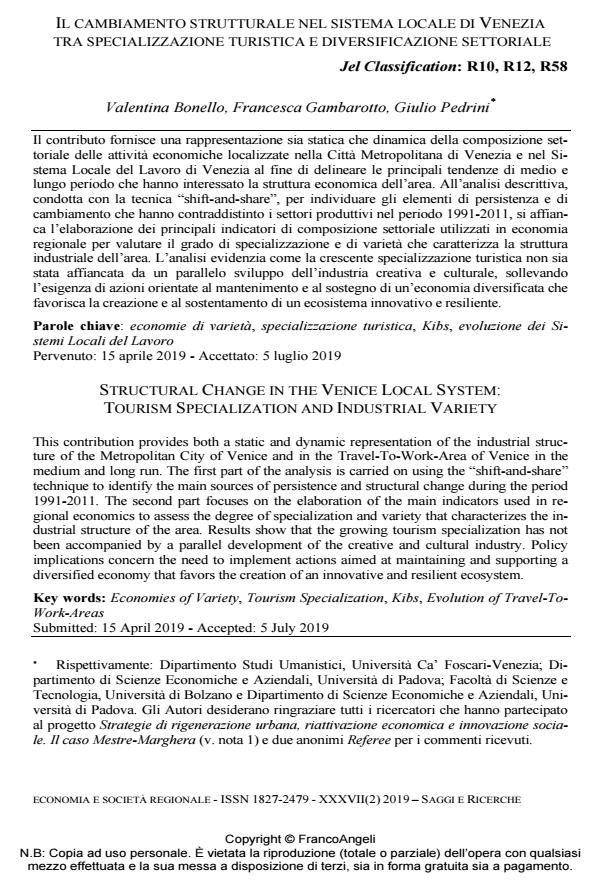Il cambiamento strutturale nel sistema locale di Venezia tra specializzazione turistica e diversificazione settoriale
Titolo Rivista ECONOMIA E SOCIETÀ REGIONALE
Autori/Curatori Valentina Bonello, Francesca Gambarotto, Giulio Pedrini
Anno di pubblicazione 2019 Fascicolo 2019/2
Lingua Italiano Numero pagine 23 P. 147-169 Dimensione file 380 KB
DOI 10.3280/ES2019-002012
Il DOI è il codice a barre della proprietà intellettuale: per saperne di più
clicca qui
Qui sotto puoi vedere in anteprima la prima pagina di questo articolo.
Se questo articolo ti interessa, lo puoi acquistare (e scaricare in formato pdf) seguendo le facili indicazioni per acquistare il download credit. Acquista Download Credits per scaricare questo Articolo in formato PDF

FrancoAngeli è membro della Publishers International Linking Association, Inc (PILA)associazione indipendente e non profit per facilitare (attraverso i servizi tecnologici implementati da CrossRef.org) l’accesso degli studiosi ai contenuti digitali nelle pubblicazioni professionali e scientifiche
Il contributo fornisce una rappresentazione sia statica che dinamica della composizione settoriale delle attività economiche localizzate nella Città Metropolitana di Venezia e nel Sistema Locale del Lavoro di Venezia al fine di delineare le principali tendenze di medio e lungo periodo che hanno interessato la struttura economica dell’area. All’analisi descrittiva, condotta con la tecnica "shift-and-share", per individuare gli elementi di persistenza e di cambiamento che hanno contraddistinto i settori produttivi nel periodo 1991-2011, si affianca l’elaborazione dei principali indicatori di composizione settoriale utilizzati in economia regionale per valutare il grado di specializzazione e di varietà che caratterizza la struttura industriale dell’area. L’analisi evidenzia come la crescente specializzazione turistica non sia stata affiancata da un parallelo sviluppo dell’industria creativa e culturale, sollevando l’esigenza di azioni orientate al mantenimento e al sostegno di un’economia diversificata che favorisca la creazione e al sostentamento di un ecosistema innovativo e resiliente.
Parole chiave:Economie di varietà, specializzazione turistica, Kibs, evoluzione dei Sistemi Locali del Lavoro
Valentina Bonello, Francesca Gambarotto, Giulio Pedrini, Il cambiamento strutturale nel sistema locale di Venezia tra specializzazione turistica e diversificazione settoriale in "ECONOMIA E SOCIETÀ REGIONALE " 2/2019, pp 147-169, DOI: 10.3280/ES2019-002012